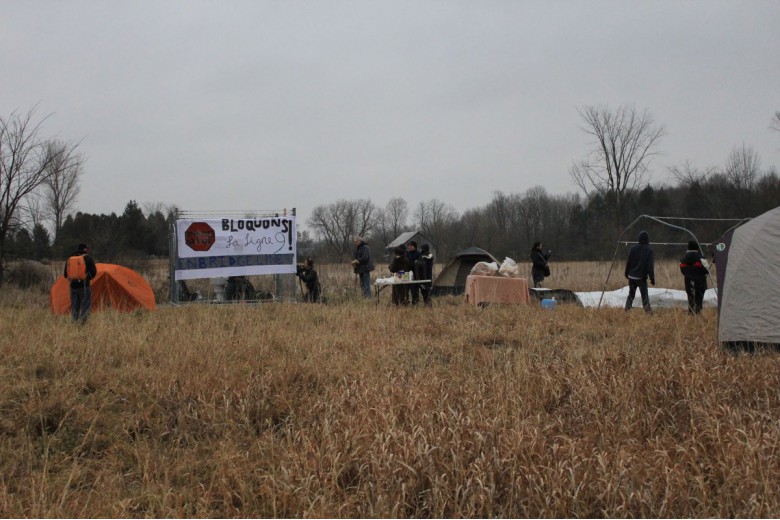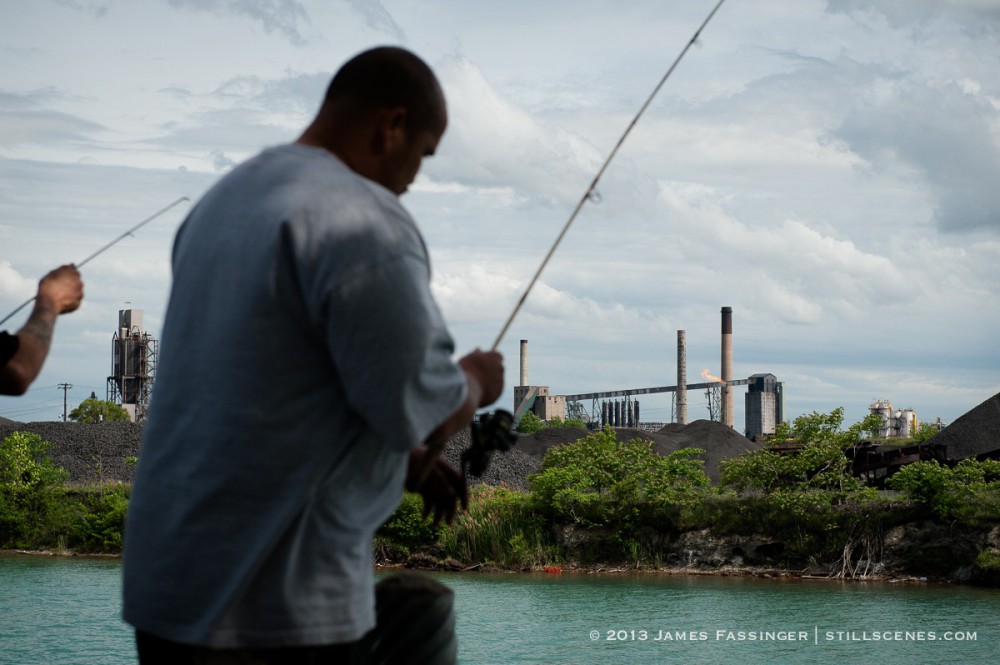
When Enbridge, the Calgary-based pipeline operator, sponsored a Toronto powwow in September, the company didn’t anticipate protest. Yet Enbridge’s marketing at the powwow was disrupted by a banner reading, “Enbridge represents colonial violence.” Lindsay Gray, an Anishinaabe woman from the Aamjiwnaang First Nation, organized the action to protest the Enbridge Line 9 pipeline project.
“Enbridge will fund Indigenous cultural events but will not respect Indigenous rights,” said Gray. “Chippewa of the Thames, Aamjiwnaang, and other First Nations were never consulted about this project. We displayed the banner to continue to inform the people of Turtle Island that Enbridge represents ongoing colonial violence and a threat to Indigenous lands and waters.”
Enbridge intends to send tarsands and/or fracked oil east to Montreal through Line 9. The company has permission from the National Energy Board (NEB) to increase the flow by 25 per cent, even as more dangerous oils will be sent through the pipeline. The project would begin at an Enbridge terminal that is on an unceded portion of the original Aamjiwnaang reserve within the city of Sarnia, ON, along Lake Huron.
In early 2014, approximately 100,000 barrels of tarsands crude from Alberta was processed each day at refineries in Sarnia and surrounding Lambton county townships. This processing intensified the ongoing pollution from Chemical Valley, a cluster of refineries, chemical plants, and rubber and plastics facilities that surround Aamjiwnaang.
The Great Lakes region is the most important hub for tarsands projects outside of Alberta. In recent years, industry has taken advantage of an existing network of pipelines and refineries to increase the region’s capacity to transport and process diluted bitumen, known as dilbit. In addition to tarsands oil shipments through the area by water and by rail, there are at least 10 pipeline projects around the Great Lakes. At least 19 refineries in the states bordering the Great Lakes have undergone upgrades over the past decade to welcome an influx of tarsands crude. In recent years, 70 per cent of tarsands oil extracted in Alberta has been sent to the U.S. Midwest. In 2014, imports of Canadian crude to the Midwest reached record highs, with approximately 2 million barrels per day being processed in the region.
The spread of tarsands oil throughout the Great Lakes region is being met by resistance movements, especially along pipeline corridors where the threat of a spill looms large. This expansion has also sparked community organizing in refinery neighbourhoods where the industry chokes the air. Refining dilbit increases emissions of sulphur dioxide, a pungent-smelling toxin that can cause serious health problems, particularly for cardiovascular and respiratory systems.
Local activists are employing a range of tactics and strategies to respond to the encroachment of industry, from direct action to outreach to popular education. These efforts have included a 700-kilometre walk in Quebec along portions of Line 9 and of TransCanada’s proposed Energy East pipeline, which would bring tarsands oil from Alberta to New Brunswick. There have also been disruptions at TransCanada’s open house events where the company markets itself in the name of doing community consultation. Other activists have locked themselves to equipment to slow down construction on pipelines or delay refinery operations. Together, these kinds of actions have contributed to wider opposition that has affected the bottom line of companies pursuing tarsands projects.
At first glance, front-line efforts can seem like NIMBY (not-in-my-backyard) campaigns that are fixated on local residents and the local environment, but these local movements are increasingly connecting with broader anti-tarsands and climate justice struggles.
The ongoing and potential impacts of tarsands infrastructure in the Great Lakes region are vast, from pipeline or tanker spills and train derailments to increased production of petroleum coke, the black, sulphurous dust that is a byproduct of tarsands refining. In this investigation, we zoom in geographically to three sites – Detroit, East Chicago, and Sarnia-Lambton – where local resistance to pipelines and refineries is beginning to bridge the gaps between the different front lines of the tarsands industry.
Life on the Front lines
“I mean, it has always been bad, but not this bad,” says Emma Lockridge. “The air is just unbearable. It’s like living inside a refinery.”
Lockridge was raised in the neighbourhood of Boynton, in southwest Detroit’s 48217, an area commonly known as Michigan’s most polluted zip code. Smoke pouring out of the stacks at the Marathon refinery and fumes wafting overhead from neighbouring salt, asphalt, and coal plants have long formed the backdrop of everyday life in the 48217. Residents of this primarily African-American community have been mobilizing for a healthier environment for years. Lockridge joined this struggle about two years ago, when she began having difficulties breathing at night. This was about the same time that the adjacent Marathon refinery began processing dilbit from the Alberta tarsands. In late 2012, the Detroit Marathon refinery completed a $2.2 billion upgrade to its facilities in order to process an additional 28,000 barrels of dilbit per day.
“It’s just a way for big industry to make money at the expense of front-line communities,” says Lockridge. Along with her neighbours, Lockridge is working on a campaign to pressure Marathon to buy out homes in Boynton on the refinery’s fence line so that residents can relocate somewhere safer.
In 2011, when Marathon had almost completed its upgrade, it did buy out over 275 homes in Oakwood Heights, another neighbourhood on its fence line, to create a green buffer zone. Lockridge sees this decision as a clear case of environmental racism: most residents who were bought out are white, whereas most members of her community, and indeed much of the 48217, are black.
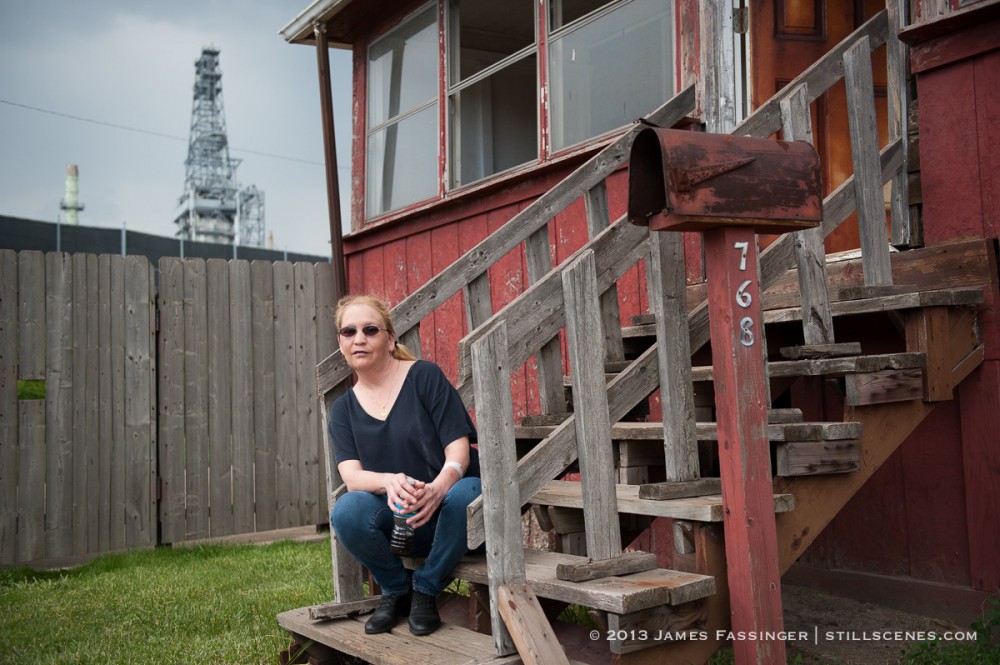
On the other side of Lake Michigan, in East Chicago’s small, low-income, mixed-race neighbourhood of Marktown, Kim Rodriguez tells a different story within a similar context. Developed in 1917 to house workers of the adjacent steel mills, Marktown today is a historic location still surrounded by industry. In recent years, the nearby British Petroleum (BP) refinery in Whiting, Indiana, has undergone a $3.8 billion expansion in order to process up to 413,000 barrels of oil per day, over 80 per cent of which is dilbit from the Alberta tarsands. Thanks to the expansion, part of the refinery now sits right next to Marktown.
Last year, BP began offering to buy homes in the community in order to create green space and new parking lots. Several old buildings have already been demolished, but many residents are refusing to leave. Among them is Rodriguez, whose family has lived in Marktown for three generations. “We’re a liability for them, that’s all,” says Rodriguez, who, like other local activists, suspects that BP’s buyout of Marktown is an attempt to mitigate future liability should there be an accident at the refinery.
Rodriguez, like Lockridge in Detroit, has been organizing her community. But while meetings in Detroit’s 48217 mostly revolve around strategies to leave, in Marktown, residents are campaigning for the opposite: to stay put.
In Aamjiwnaang, the ties to the land are somewhat different. Pollution has distinct impacts in an Indigenous community. Facilities in Chemical Valley are poisoning traditional hunting game and herbal medicines. Cedar in the area – which is sacred to Anishinaabe people – is now contaminated with cadmium, a toxic metal. Ever since petrochemical facilities were established on Aamjiwnaang territory in the early 20th century, the worst of the pollution around Sarnia-Lambton has been experienced at the reserve.
In recent decades, residents of Aamjiwnaang have used an array of strategies to protect the air, land, and water, including attempts to regain traditional land in court, an ongoing lawsuit against Suncor and the provincial government, a 12-day blockade of a railway that crosses unceded territory to feed the petrochemical industry, and lobbying to improve air quality standards. Gray is part of a network called Aamjiwnaang and Sarnia Against Pipelines (ASAP), which has used rallies and online media to connect opposition to the Line 9 reversal to organizing around Chemical Valley. ASAP’s work on the Line 9 campaign helped expand the conversation about the pipeline to include issues of environmental racism, Indigenous rights, and front-line impacts.
Aamjiwnaang First Nation: Profile of a Sacrifice ZonePronounced am-JIN-nun, Aamjiwnaang translates from Anishinaabemowin (Ojibwa) as “at the spawning stream.” There have been fishing advisories since the 1970s due to pollution in the region.
Location
Located on the southern tip of Lake Huron on the St. Clair River, just east of Michigan and inside Sarnia’s city limits. The reserve is in the heart of Chemical Valley, which is home to an estimated 40 per cent of Canada’s chemical industry. There are 60 major industrial facilities within a 26-kilometre radius of Aamjiwnaang lands. Major firms include Imperial Oil, Dow Canada, Shell Canada, Suncor Energy, and NOVA Chemicals.Population
About 2,000 members with about 850 living on reserve.Birth Rates
2005: a study published in the U.S. journal Environmental Health Perspectives found that beginning in the 1990s, twice as many girls as boys are being born on the reserve instead of the normal 50/50 ratio.2013: a study led by McGill professor Niladri Basu found elevated levels of hormone-blocking pollutants among women and children. The study found above-average exposure for toxins including cadmium and polychlorinated biphenyls or PCBs.
Health Crises
23 per cent of Aamjiwnaang children have learning or behavioural difficulties according to a 2005 study – a rate nearly six times higher than children in a neighbouring county. The asthma rate for children on the reserve is about 2.5 times higher than the Canadian average.A 2006 survey by Aamjiwnaang’s health and environment committee cited health concerns including miscarriages, chronic headaches, and asthma. Forty per cent of those surveyed said they used an inhaler.
Talking About Spills
“Tarsands kill, pipelines spill!” rings a chant echoed at anti-pipeline rallies across the Great Lakes region. Protesters often point to a spill in Michigan in 2010 where Enbridge’s Line 6B pipeline ruptured, spilling approximately 1 million gallons of dilbit into the Kalamazoo River. The cleanup took over four and half years, and many residents insist that the river will never be the same, while others continue to report serious health concerns related to their exposure to the spill. Meanwhile, Enbridge received permission to replace and expand Line 6B’s capacity from 240,000 to 500,000 barrels per day. The expanded Line 6B has been flowing to Chemical Valley, in Sarnia-Lambton, and connects to a series of other pipelines to bring dilbit to Detroit. The grassroots group Michigan Coalition Against Tar Sands has thus focused their energies not only on slowing down construction on Line 6B through direct action at construction sites but also on supporting the work of people like Lockridge in Detroit’s 48217.
The risk of spills has been a powerful mobilization tactic for pipeline opponents. By invoking the possible recurrence of an event like the Kalamazoo River spill, anti-pipeline activists have often broadened their coalitions across diverse political lines.
However, anti-pipeline campaigns that centre on spills also have their downsides. A focus on spills can quickly render vital political debates – about what kinds of energy infrastructures we want, about environmental responsibilities in an age of global climate change, and about front-line impacts – into a technical one about the integrity of particular pipelines and their maintenance and oversight. A narrow focus on spills doesn’t address the chronic, everyday impacts of tarsands extraction in northern Alberta or tarsands processing in sacrifice zones like southwest Detroit, East Chicago, or Sarnia-Lambton and Aamjiwnaang.
In order to build unified campaigns and mobilize a larger base, activists who have politics that are set against an entire industry are finding ways to collaborate with people who are initially more concerned about local impacts like spills. One tangible outcome of these collaborations in the anti-Line 9 campaign was a Toronto municipal resolution against the transport of bitumen through the city. Anti-Line 9 campaign alliances have also provided support to direct actions to halt Enbridge’s work at various sites along the route.
However, the intimate linkages between pipelines, refineries, and sites of extraction are seldom made apparent in mainstream media reporting on controversial pipeline projects like the Keystone XL, and the anti-tarsands movement itself has placed more focus on pipeline projects than on refining. This is in part a strategic choice: by stifling a node in tarsands crude transportation networks, activists hope to ultimately slow down the expansion of the industry, including refineries. Solidarity across the front lines of industry is still a work in progress.
Connecting Up
On a nationwide day of action against the Keystone XL pipeline in May 2014, about 200 activists from across the Midwest gathered in Marktown for a rally to protest recent home demolitions. Participants drew connections between the expansion of the tarsands and front-line impacts in communities like Marktown. Rodriguez is sympathetic to these broader struggles and appreciates support from outside activists but maintains that her project is to save her community. It’s an exhausting fight, and she doesn’t always have the time to link her work to other struggles, which may detract from urgent tactics needed to stop demolitions in Marktown. “I can’t eat, sleep, and breathe Marktown,” she says, explaining that the stress of fighting BP aggravates existing health problems and consumes much of her energy.
Thomas Frank, an East Chicago activist who also lives in close proximity to the BP refinery, echoes Rodriguez. He suggests there is often a disconnect between urban environmental activists, NGOs, and people living on the front lines of industry.
“For most East Chicagoans, the [BP expansion] project has gone virtually unnoticed. It is not part of their everyday experience. Many East Chicagoans have more immediate concerns than environmental issues or climate change,” says Frank, citing a low median income and high unemployment rates, compounded by structural racism – the majority of East Chicagoans are people of colour.
Wider injustices such as racism and poverty can also be challenged while resisting specific tarsands projects. In particular, parts of the anti-tarsands movement have emphasized the tarsands industry’s impacts on Indigenous peoples and territories and the lack of free, prior, and informed consent mandated by the United Nations.
Métis activist Sâkihitowin Awâsis has been part of the anti-Line 9 campaign and stresses the importance of an anti-colonial approach to pipelines activism. “Native anti-pipeline activists have been arrested at what were supposed to be public NEB hearings, many are closely surveilled by police, and some are incarcerated. Some have had their homes raided, and still others have court conditions that restrict them from even talking about Enbridge pipelines,” says Awâsis. “This is only a small fraction of the colonial violence active in our everyday lives, and still we resist. Anti-colonial resistance to the tarsands pipelines in the Great Lakes region includes crowdsourcing to assist in providing legal, physical, and emotional support for Native warriors and land defenders facing the criminalization of Indigenous decolonization and land reclamation.”
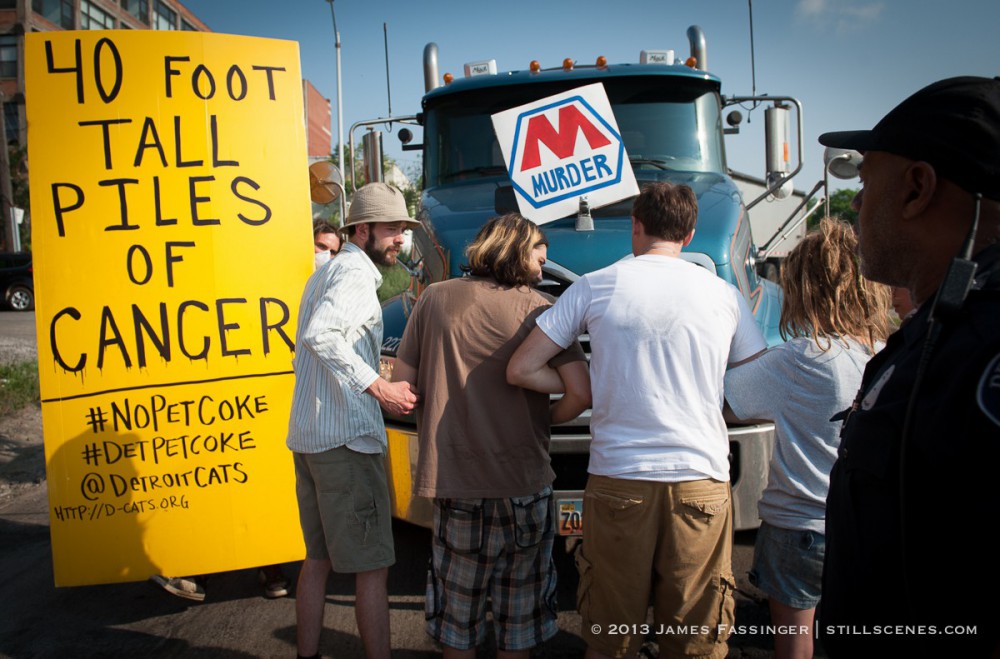
In Detroit’s 48217, Lockridge voices the need to forge solidarity between different local struggles. “We want change not just for us. We want this for Richmond, California. We want this for people in Louisiana [living near refineries]. I believe this community could set the standard for the entire country. They can’t just come in here and kill us.”
Mobilizations around pipelines have demonstrated how front-line organizers can collaborate with outside supporters to build effective campaigns. These alliances have been prominent in campaigns against the Northern Gateway pipeline in B.C. Such strategies are likewise needed to resist the impacts of refineries and to challenge the broader industry in the process. By taking direction from the communities that bear the brunt of the industry’s impacts and threats, campaigns can demonstrate the stakes and the urgency in anti-tarsands struggles, while providing support to those who have the most to gain from resistance. On the front lines, the battle between tarsands expansion and energy alternatives is a tangible, everyday reality. As a movement, foregrounding and building solidarity across these realities is our best bet for confronting the tarsands industry in its entirety.


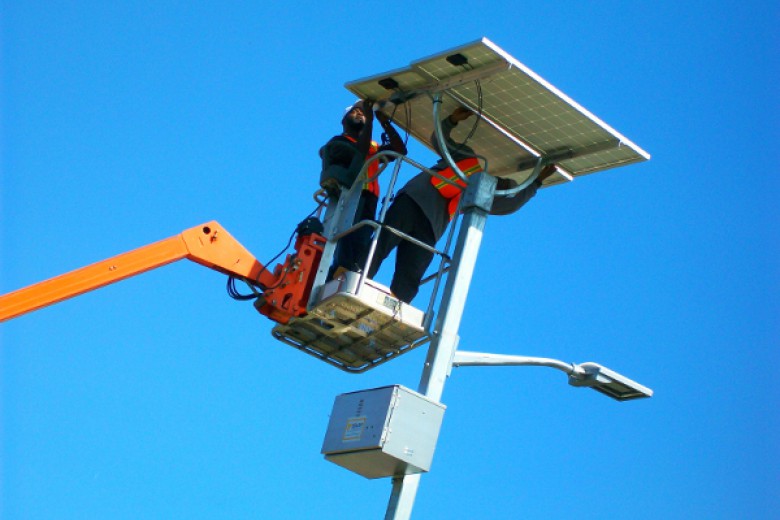
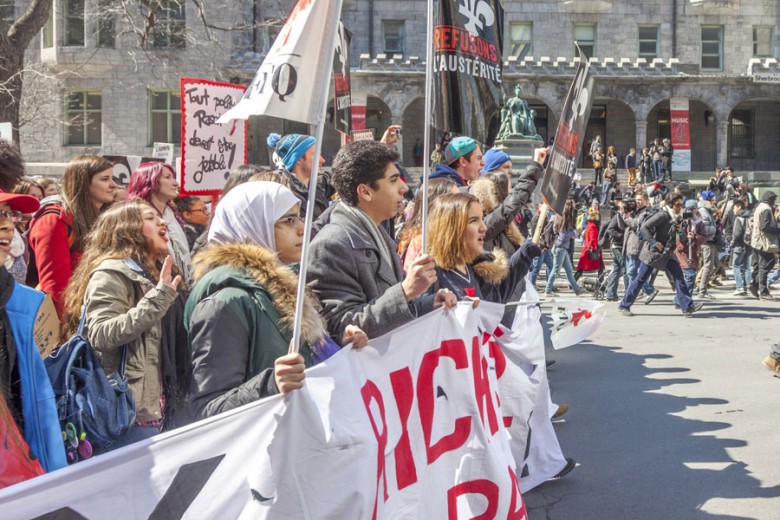
_780_520_90_s_c1_c_c.jpg)
